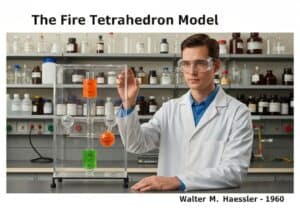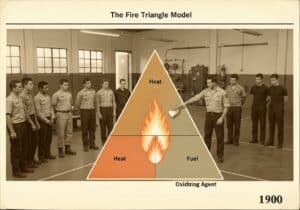The European standard EN 2, ‘Classification of fires’, harmonizes fire classes across member nations. It defines five classes: A (solids), B (liquids), C (gases), D (metals), and F (cooking oils). A key distinction from the US system is that Class C is specifically for flammable gases, and there is no dedicated class for electrical fires; instead, the burning material is classified.
European Fire Classification (EN 2)
- European Committee for Standardization (CEN)
The EN 2 standard was developed to create a single, coherent system for fire classification within the European Union, replacing a patchwork of different national normes. This harmonization was crucial for the single market, ensuring that a fire extinguisher manufactured in one country would be understood and accepted in another.
The most significant departure from the American NFPA system is the treatment of electrical and gaseous fires. In EN 2, Class C is exclusively for fires involving flammable gases like propane, butane, or natural gas. This recognizes the unique hazard they present, as extinguishing the flame without stopping the gas leak can lead to the formation of an explosive gas cloud. The proper procedure is to isolate the gas supply first.
Fires involving electricity are not given their own class. The European rationale is that electricity is an ignition source, not a fuel. The fire itself involves the material that is burning, such as the plastic insulation on a wire (Class A). Therefore, an extinguisher is rated for its suitability for use on live electrical equipment (indicated on the label, often up to 1000V), but the fire is classified by its fuel. This approach is considered more technically precise, as once the power is cut, the fire’s fundamental nature is simply that of its burning material.
Class F for cooking fats is equivalent to the American Class K, addressing the specific challenges of high-temperature grease fires.
Taper
Perturbation
Usage
Précurseurs
- pre-existing national fire classification standards in various european countries
- the influence of the american nfpa classification system
- the formation of the european single market, requiring harmonized standards
- advances in understanding the specific combustion properties of gases
Applications
- standardization of fire extinguisher fabrication and testing in the eu
- pan-european building codes and fire safety règlements
- product labeling (ce marking) for fire safety equipment
- simplified trade of fire protection devices within the european single market
- multinational corporate safety training programs
Brevets:
Idées d'innovations potentielles
!niveaux !!! Adhésion obligatoire
Vous devez être membre de l'association pour accéder à ce contenu.
DISPONIBLE POUR DE NOUVEAUX DÉFIS
Ingénieur mécanique, chef de projet, ingénierie des procédés ou R&D
Disponible pour un nouveau défi dans un court délai.
Contactez-moi sur LinkedIn
Intégration électronique métal-plastique, Conception à coût réduit, BPF, Ergonomie, Appareils et consommables de volume moyen à élevé, Production allégée, Secteurs réglementés, CE et FDA, CAO, Solidworks, Lean Sigma Black Belt, ISO 13485 médical
Nous recherchons un nouveau sponsor
Votre entreprise ou institution est dans le domaine de la technique, de la science ou de la recherche ?
> envoyez-nous un message <
Recevez tous les nouveaux articles
Gratuit, pas de spam, email non distribué ni revendu
ou vous pouvez obtenir votre adhésion complète - gratuitement - pour accéder à tout le contenu restreint >ici<
Inventions, innovations et principes techniques connexes














